In Mark Weiser’s essay, ‘The Computer for the 21st Century’, he comments: “The most profound technologies are those that disappear. They weave themselves into the fabric of everyday life until they are indistinguishable from it.”
This vision is becoming a reality with the emergence of a new breed of hyper tuned-in devices that respond and adapt to our behaviour, and fall under the umbrella term, ‘The Internet of Things’.
What is the Internet of Things?
Defined by the Global Standards Initiative of Internet of Things as: “the infrastructure of the information society”, the Internet of Things (IoT) is, simply put, about connecting objects to the internet.
Technically speaking, the term refers to a network or system of devices which are all connected – whether this be computers, sensors, living things or just objects – that can send messages to the other devices on the network. For example, one of the first internet devices was a toaster (created way back in 1990) that could be turned on and off using the internet.
Intelligent devices can use ‘big data’, drawn from previous activity en masse, or even zero in on a particular user, to help inform the way they behave, potentially letting us work with a device as naturally as possible, as well as increasing the efficiency of the task in hand.
So far, the sectors that are forecasted to be the biggest adopters are: wearable or personal technology, sensors on objects, location-based sensors, and other geographical information systems that provide data about the world around them.
Whether it’s a bathroom that measures everything from water use to toothpaste technique, or connected cows that give farmers updates to help improve yield, the applications are practically limitless for both consumers and business.
Leading IT and research company Gartner forecasts that 6.4 billion ‘connected things’ will be used globally by the end of 2016, and estimates that by 2020, this will rise to 20.8 billion.
What are the potential issues?
The two most contentious issues for IoT are security and privacy. In 2014 a ‘smart fridge’ which was connected to the internet, was hacked and started to send spam emails – where devices are connected to the internet, there is a risk of both malfunction and cyber attack.
If you can unlock your door from an app, would it be possible for a burglar to do the same? If a hacker ‘took over’ your fridge, would you pay a ‘ransom’ to regain control?
Similarly, these devices collect a substantial amount of personal data, as well as ‘big data’, meaning that there is a potential privacy issue – how will this data be used? What if it falls into the wrong hands?
There’s also an ethical issue – when is it inappropriate to use these devices? Who is responsible if the device makes a decision which breaks the law or causes injury? Questions once the subject of science fiction books, are becoming today’s issue.
How could this impact insurance?
IoT is a fast-growing area of insurance for both providers and consumers. Insurers are starting to look at how they would be best placed to utilise the technology, for example, a sample home built by American Modern Insurance is being used to assess how best to monitor risk and claims in the home. The technology also presents possibilities for policyholders, for example, John Hancock’s Vitality program deploys FitBit to help policyholders adopt better habits, with the aim of helping them change their insurance premiums.
IoT’s biggest asset for the insurance industry is data. Underwriting is founded on assessing risk – risk based on data and patterns – meaning that these policies have the potential to become hyper-personalised to individual users.
This large pool of data also gives insurance companies the opportunity to create better-informed, more accurate policies – potentially leading to more fairly priced policies for users (based on their personal habits and statistical grouping) and better profit margins for insurers (as high risk individuals are more likely to be categorised as high risk). When the technology has had time to develop, IoT even creates the potential for ‘pay-as-you-live’ insurance which is usage-based.
The cyber security implications however will be a significant issue for the insurance industry. Where a device is connected to the internet it has the potential to be hacked, meaning insurance policies will need to cover IoT tech in the event of malfunction or malicious takeover. As these devices become so integrated they are practically ‘invisible’ within our lives, a whole new type of insurance will need to emerge to plug the gap and cover users and businesses in the event that things go wrong.
Are you interested in hearing more about IoT insurance? We’d love to discuss the policies we offer.




